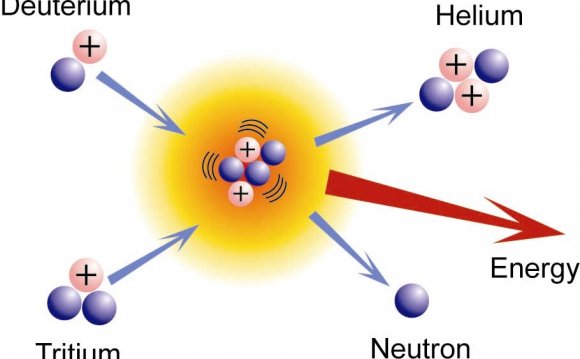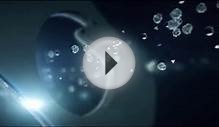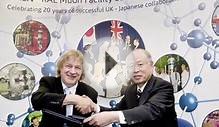
 An erupting, massive star in the Milky Way. NASA's Hubble Space Telescope has identified one of the most massive stars known, emitting as much as 10 million times the power of our Sun and with a radius larger than the distance between the Sun and the Earth.
An erupting, massive star in the Milky Way. NASA's Hubble Space Telescope has identified one of the most massive stars known, emitting as much as 10 million times the power of our Sun and with a radius larger than the distance between the Sun and the Earth.
Click on image for full size
Image courtesy of NASA, Space Telescope Institute
Fusion in the core of stars is reached when the density and temperature are high enough. There are different fusion cycles that occur in different phases of the life of a star. These different cycles make the different elements we know. The first fusion cycle is the fusion of Hydrogen into Helium. This is the stage that our Sun is in.
In stars with a very high temperature there are other fusion cycles that take place(CNO cycle). At higher temperatures, Helium burning produces Carbon. Finally, at even higher temperatures the heavier elements like Iron are formed.
The fusion reactions occurring in stars makes neutrinos that reach Earth. By detecting these neutrinos, scientists learn about fusion inside the stars.
Shop Windows to the Universe Science Store!
Cool It! is the new card game from the Union of Concerned Scientists that teaches kids about the choices we have when it comes to climate changeand how policy and technology decisions made today will matter. Cool It! is available in our online store.Volcminer d1 volcminer.company/volcminer-d1.html.
YOU MIGHT ALSO LIKE












